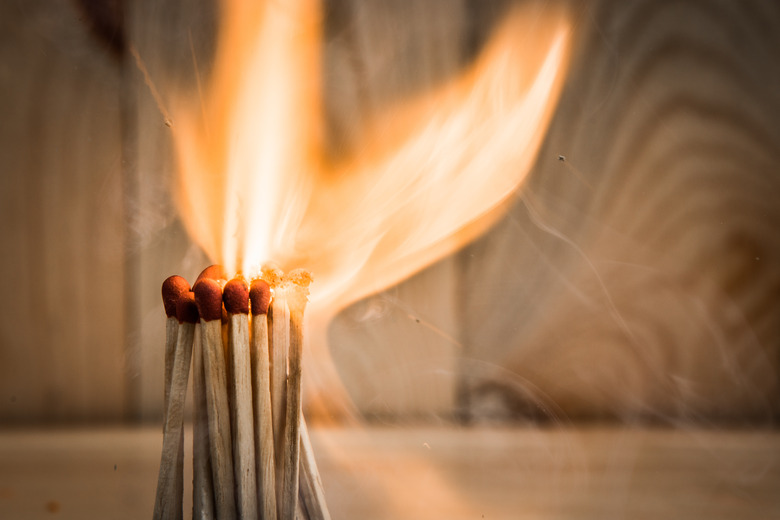Characteristics Of Chemical Reactions
A chemical reaction results in a change of molecular or ionic structure. Scientists and medical professionals create and observe chemical reactions in order to study these changes. But how do they know whether a chemical reaction has taken place during the course of an experiment? The only way to know for sure is to perform a detailed chemical analysis. However, chemical reactions have several observable characteristics that scientists can see. The presence of one or more of these characteristics may indicate that a chemical reaction has taken place.
TL;DR (Too Long; Didn't Read)
A chemical reaction takes place when two or more substances combine to produce a change in molecular or ionic structure. If scientists want to know whether a chemical reaction has taken place, they may look for common characteristics of a chemical reaction. Some of these characteristics, such as a change in color, are visual. You can tell others by smell or by simple measurements, such as changes in odor or temperature. However, only a detailed chemical analysis can confirm for certain that a reaction has occurred.
Visually Observable Characteristics
Visually Observable Characteristics
All chemical reactions produce different results, which means that not all chemical reactions share the same characteristics. But, if scientists combine two substances and want to know whether a chemical reaction has taken place, they may begin by looking for some of the most common characteristics. These include certain visual changes.
One of the most easily observable changes, which may take place during a chemical reaction, is a change in color. Of course, if two different colored liquids combine, they will form a new color. This is not an indicator of a chemical reaction. If a new color emerges after a few seconds or minutes, however, then a chemical reaction may have taken place.
Changes in texture may also indicate a change in molecular structure. For example, if two runny liquids combine to produce a liquid which is thick and rubbery, it is likely that a chemical reaction has taken place. Changes in luster may also occur after a chemical reaction. Luster is how "shiny" an object appears due to the way it reacts to light. If dull substances become lustrous after being combined, it's a sign that a chemical reaction has taken place.
The observation of bubbles is a good visual indication that a chemical reaction has taken place. Bubbles indicate that a gas may have formed in the course of the reaction.
Changes in color, texture and luster don't always mean that a chemical reaction has taken place, nor does the presence of bubbles. But because all are common characteristics of chemical reactions, they can serve as clues that a molecular change may have occurred.
Other Observable Characteristics
Other Observable Characteristics
Changes in odor are a common characteristic of certain chemical reactions. Subtle changes are not as likely to indicate a chemical reaction as drastic changes. For example, if two sweet-smelling liquids smell smoky or sour after they're combined, it may indicate a chemical change.
Changes in temperature often take place in chemical reactions. A simple thermometer can measure the temperature of substances before and after a reaction. If an observable change in temperature occurs, it is a sign that a chemical reaction may have occurred.
Formation of a precipitate is a characteristic of many chemical reactions. Precipitates are solids which may form in solutions or in other solids during chemical reactions. For example, when you combine silver nitrate and sodium chloride, the resulting reaction causes a precipitate of silver chloride to form.
Cite This Article
MLA
Cook, Maria. "Characteristics Of Chemical Reactions" sciencing.com, https://www.sciencing.com/characteristics-chemical-reactions-8501088/. 27 April 2018.
APA
Cook, Maria. (2018, April 27). Characteristics Of Chemical Reactions. sciencing.com. Retrieved from https://www.sciencing.com/characteristics-chemical-reactions-8501088/
Chicago
Cook, Maria. Characteristics Of Chemical Reactions last modified August 30, 2022. https://www.sciencing.com/characteristics-chemical-reactions-8501088/
